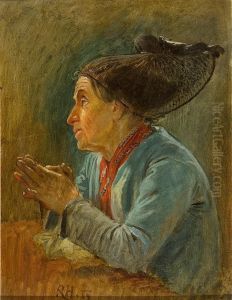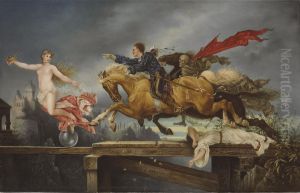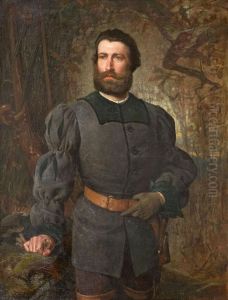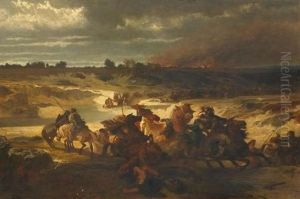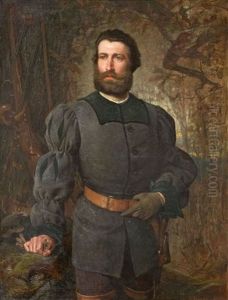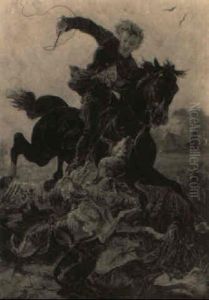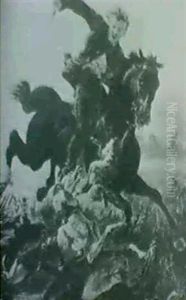Rudolf Friedrich Henneberg Paintings
Rudolf Friedrich Henneberg was a German painter known for his contributions to genre painting, portraiture, and historical subjects. Born on July 9, 1826, in Königsberg, Prussia (now Kaliningrad, Russia), Henneberg's artistic journey began in an era characterized by a rich interplay of Romanticism and the burgeoning influence of realism in art. His work, which elegantly bridges these two movements, reflects a keen interest in capturing the essence of human experience, historical accuracy, and a nuanced understanding of narrative depth.
After initial studies in Königsberg, Henneberg moved to Berlin to further his education. His talent soon led him to the vibrant art scene of Düsseldorf, a city that was, at the time, a nucleus for artistic innovation and a gathering place for artists from across Europe. There, Henneberg became associated with the Düsseldorf school of painting, a group known for their meticulous attention to detail, a romantic approach to landscapes, and a commitment to academic painting techniques. This environment profoundly influenced Henneberg's stylistic development, enriching his palette and honing his skill in composition.
In the 1850s, Henneberg's quest for artistic growth took him to Paris, the epicenter of European art, where he was exposed to the works of contemporary French artists and the early stirrings of Impressionism. This period was crucial in expanding his horizons and integrating more light and movement into his work. However, Henneberg's heart remained tethered to Germanic themes and stories, which dominated his most celebrated pieces. His works often depicted scenes from German literature and folklore, filled with a sense of drama and emotional depth.
Despite his talent and contributions to the German art scene, Henneberg's life was marked by challenges, including the struggle for recognition and financial stability. His dedication to his craft, however, never waned, and he continued to produce works that resonated with both critics and the public. Henneberg's paintings, characterized by their vivid storytelling and technical precision, earned him accolades in his homeland and abroad.
Rudolf Friedrich Henneberg's legacy is that of an artist who navigated the crosscurrents of Romanticism and realism with grace and originality. His death on November 15, 1876, in Florence, Italy, marked the end of a career that had enriched the German art world. Today, his works are preserved in museums and collections across Germany and Europe, serving as testaments to his enduring impact on the 19th-century art scene.
